آرت نوو یکی از جنبشها و تا حدودی سبکهای مهم تاریخ هنر معاصره که اواخر قرن 19 و اوایل قرن بیستم در مدت زمان کوتاهی به بروز رسید و خیلی زود توسظ جنبش مدرن قرن بیست به معنای کامل بلعیده شد. احتمالا برخی از شما متن رو می خونین و خب در مورد تاریخچه و افراد مطرح این جریان چیزهایی دستگیرتون می شه اما نکته هایی هست که به نظر من هم می رسه که یکی دوتا شون رو می گم:
آرت نوو تلاشش این بود که پاسخی برای هماورد صنعت هنر و داشته باشه. دوست داشت صنعت رو با هنر آشتی بده بدون این که به هیمنهی زیباشناسی عصر خودش ضربه بزنه. ولی خیلی ها امروز این اندیشه آرت نوو رو خام انگاری و ساده انگاری می دونن چرا که معتقدند آرت نوو دقیقا ماهیت صنعت رو نشناخته که خیال کرده می شه صنعت رو پذیرفت ولی زیبایی شناسی در پس صنعت رو نادیده گرفت! با این وجود باید بگم یکی مثل من با اون که در افقی دیگه از تاریخ ایستادم و نظارهگر این واقعه ها هستم، سخت به سادهانگاری نهفته در آرت نوو تعلق دارم :)
غالب هنرمندان جریان آرت نوو به زعم من آدم هایی مظلوم در تاریخ هنر هستند. از ویکتور هورتا بگیر که نامی ازش در تاریخ نمیاد تا امثال گائودی که تاریخ برای کشف نبوغشون ظرفیت کافی نداشت.
با این وجودها، اگه خوب دقت کنیم همین امروز هم در اطراف و درون زندگیمون، خیلی آثار از آرت نوو وجود داره، چه بدونیم و چه نادیده بگیریم.
راستی این مطلب رو ممکنه بعدها به اسناد بیشتری مجهز کنم و دوباره بازنشرش بدم ...
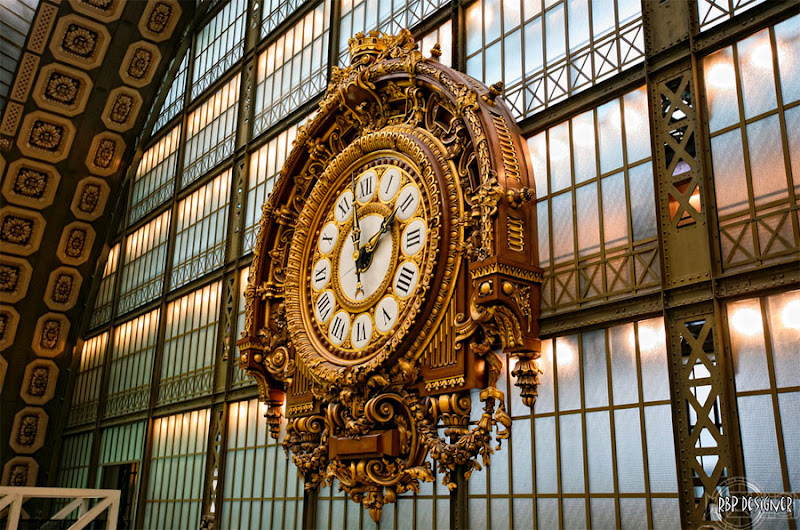
(Victor Laloux's Beaux-Arts clock in the Orsay Museum, Paris; photo by Ruy Barbosa Pinto)
I have to admit, Art Nouveau is my favorite period in art history. Perhaps, because it also coincides with 1900s frenetically-paced industrial revolution (superimposing the grimy steamy machinery and belching factories with delicate and marvelous fairy curves). Blessed by works of such masters as Hector Guimard, Alphonse Mucha, Antoni Gaudi, this style seems to be ripe with foreboding of coming social upheavals and a general sense of anything-goes wild abandon that prevailed in Europe, and especially in France in the early 1900s.
This article does not intend to educate about every variety of Art Nouveau (there are countless books and Wikipedia for that). But I'd like to highlight the most gorgeous examples, including the ones that so far escaped wide public attention. Remember, with every year we step further away from this incredibly creative era, and many soul-enriching art pieces may well be doomed to recede into the mists of time without their due share of appreciation. Well, no more. We here at Dark Roasted Blend are going to bring some of this awareness back, in many future installments of this series.
Hector Guimard's "organic buildings" in Paris
Everybody knows about Hector's contribution to Paris' Metropolitain: the flowery and somewhat alien-looking (especially in twilight) entrances all over Paris center -
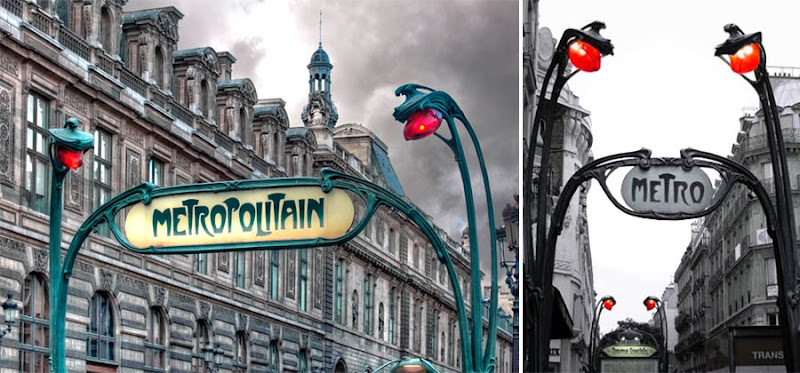
(image credit: Claude Rozier)
These graceful organic forms may even bring to mind the former glory of the 1851 Paris Crystal Palace, a legendary structure, of which only a few photographs still exist today. Here are some details of the entrance to Metro Abesses station:
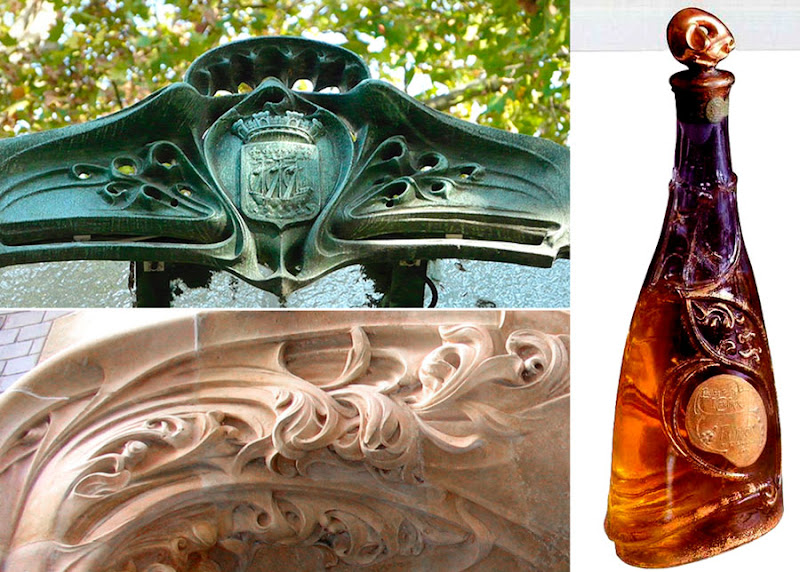
(images credit: Jean-Claude Fornerod, Jean-Pierre Dalbéra; a bottle via)
His vision for furniture also embodied twisty organic forms, which may or may not be the ultimate in structural design (one simply can not get carried away with wild arched and curved designs, when most furniture requires solid function and support):
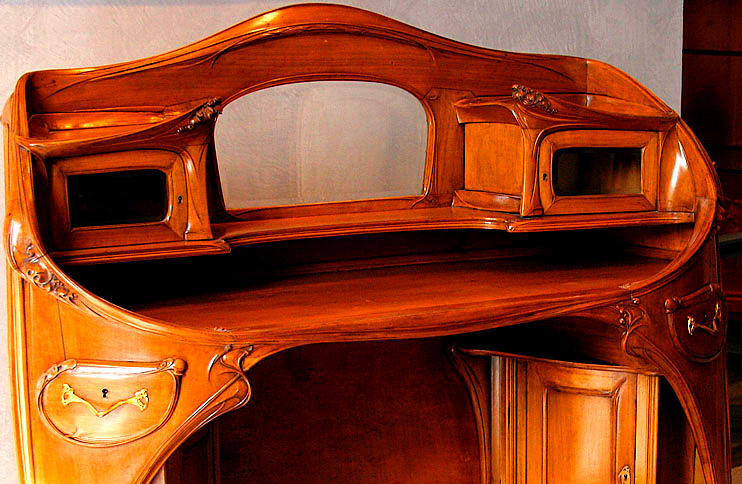
(image via)
Hector Guimard Cabinet, c. 1899; another fantastic light fixture; brass curves detail; and a rare treat - 1900 embroidered textile ornament:
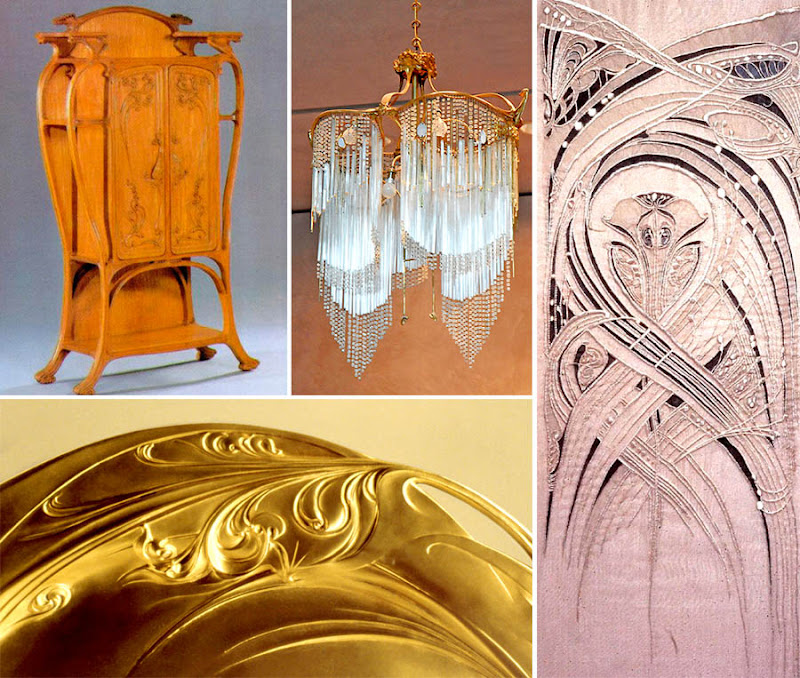
(images via 2, 3, 4, 5)
"The terrifying and edible beauty of Art Nouveau architecture." -- Salvador Dali
One of the most beautiful crosses I have ever seen... plus details from his Metropolitain entrances and from an entrance to Castel Beranger, Rue Fontaine, 14:
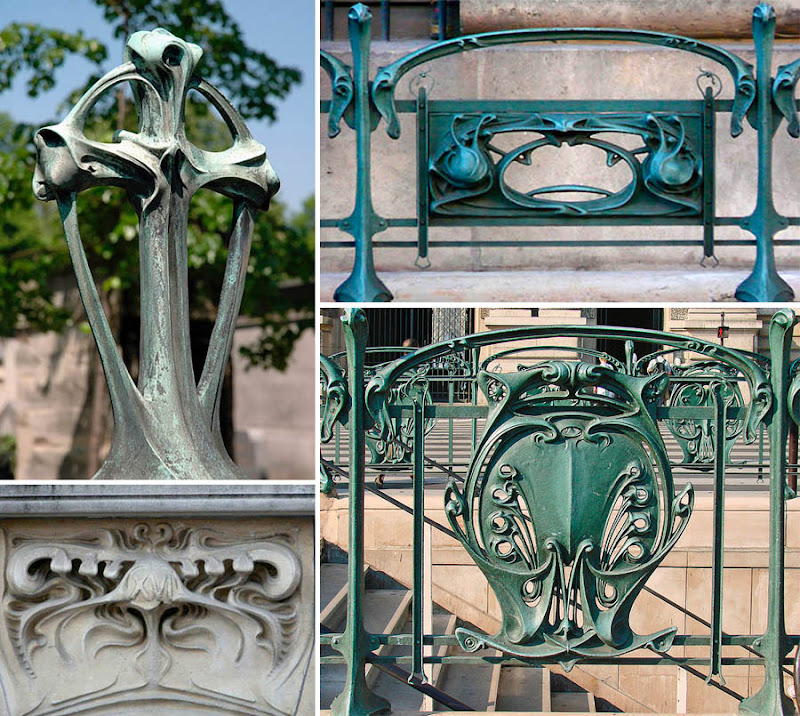
(images credit: Francis Mariani, Jean-Claude Fornerod, Jean-Pierre Dalbéra)
Castel Beranger is a rare architectural treasure throughout: check out this Hippocampus creature, for example! -
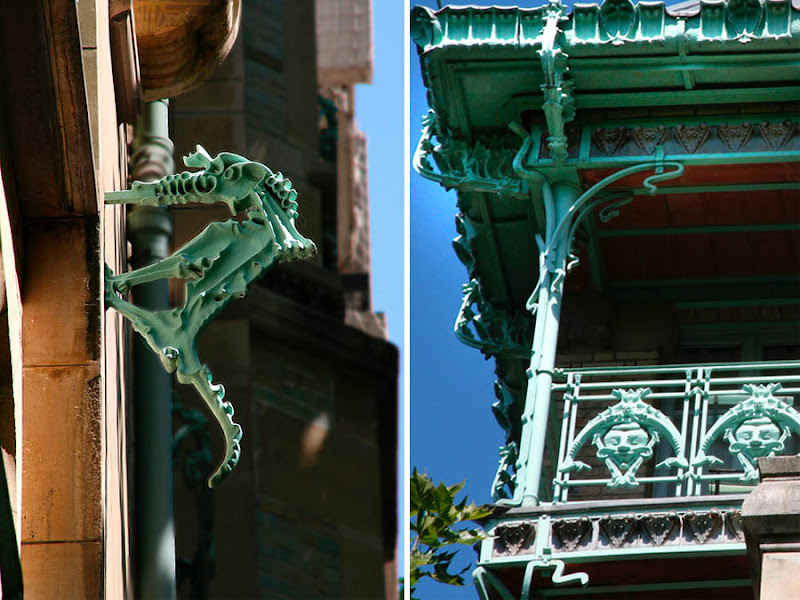
(images credit: Umberto Luparelli)
The entrance is also a classic... allowing a delicate play of light:

(images via 1, 2)
Inside Castel Beranger, 14 Rue Fontaine:

(image credit: postpanglossian)
Another house by Hector is this fairy-tale cottage (yet another one is for sale here):

"Hector Guimard, meanwhile, pushed the use of parts of trees, flowers, stems and roots to the pinnacle during the Golden Age of Art Nouveau. Guimard was said to have been committed to total interior design, with his talents extending from wrought iron entrance gates to wallpaper patterns and from fire places to side chats. He even used the style to craft papier mache ceiling decorations"
Shown in the collage below is the light fixture and jewelry by Hector Guimard - and his daring architecture: La Maison Coillot, Lille; Ceramique Coilliot, Rue Fleurus; Villa Hemsy, Saint Cloud (Hauts de Seine), 1913:
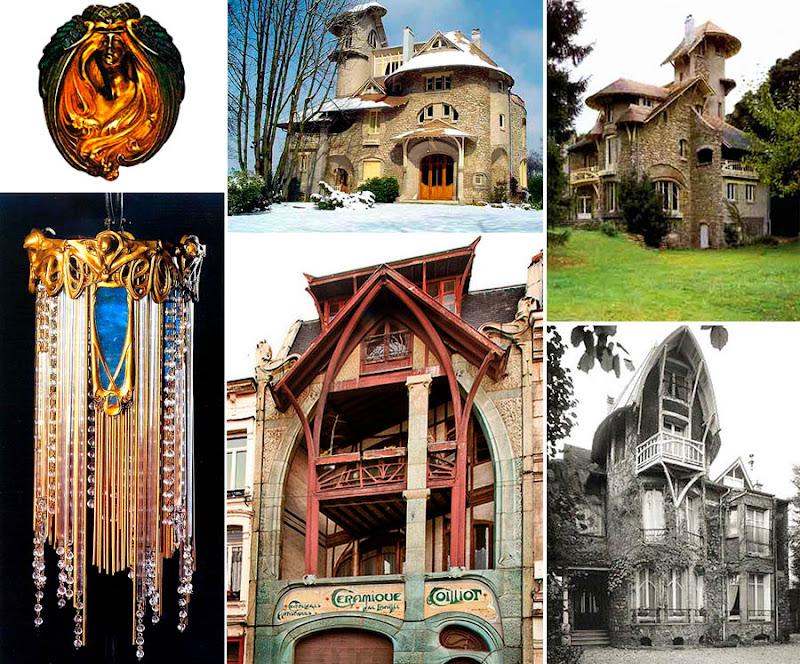
(images via 1, 2, 3)
Beautiful Art Nouveau works by other artists
Emile Galle's "Dragonfly" stool, 1898 and other furniture by "Ecole de Nancy":

(image via)
This spectacularly carved wine barrel is also work by Emile Galle:
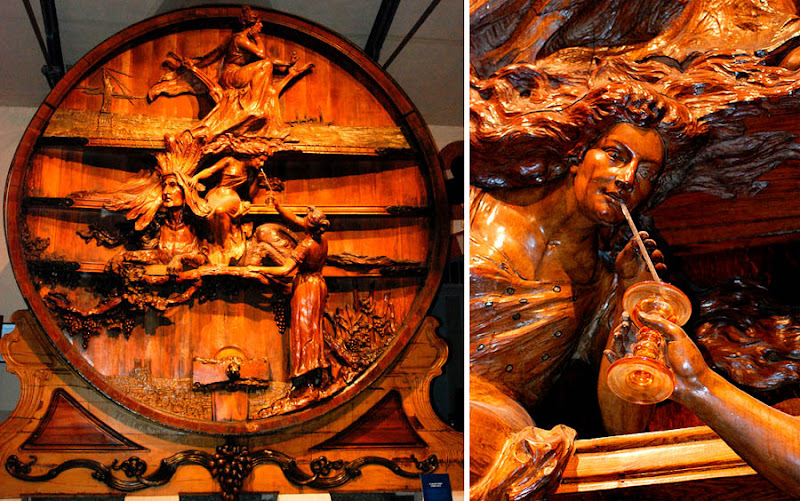
(images credit: Sven Cipido)
Another example of Ecole de Nancy ("School of Nancy" style) is the beautiful door by Emile Andre Maison Huot, 1903 (left image) and by Jacques Gruber's "Stained Glass with Roses and Gulls", 1904:
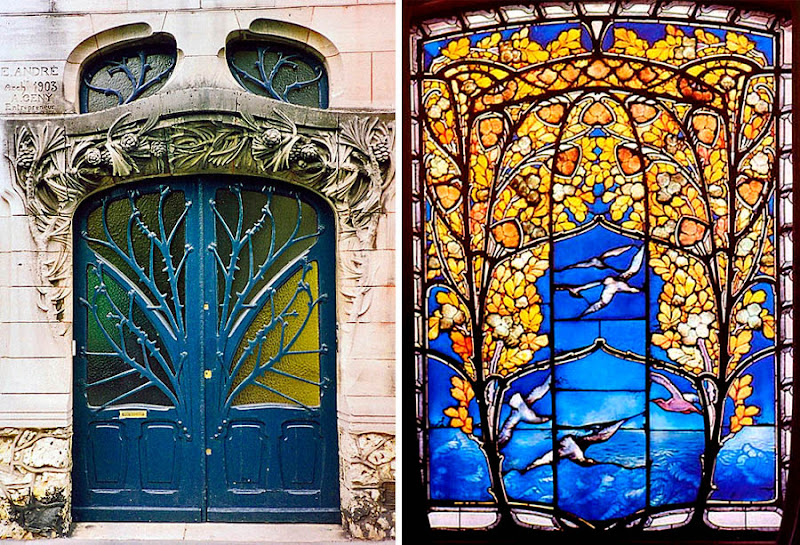
(images credit: Claudio Zieger, Art Knowledge)
An entrance to Avenue Rapp building, by Jules Lavirotte (left) and Maison Saint-Cyr – 11 square Ambiorix, Brussels – Architect Gustave Strauven (1903):

(images credit: Claude Covo-Farchi, Sokleine)
Art Nouveau in Budapest, Hungary: the door to Bedo House and the Post Office Savings Bank, by architect Odon Lechner:

(images credit: Phil Lewis)
Here is a truly beautiful interior: Chez Maxim's in Paris -
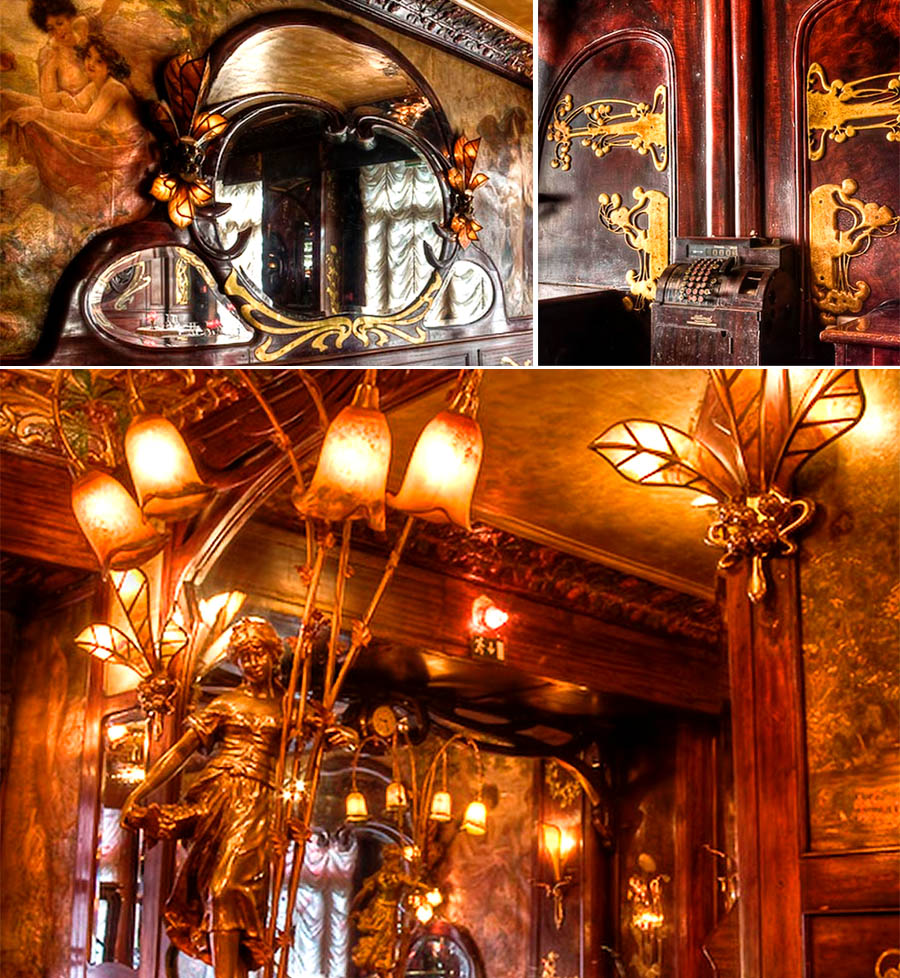
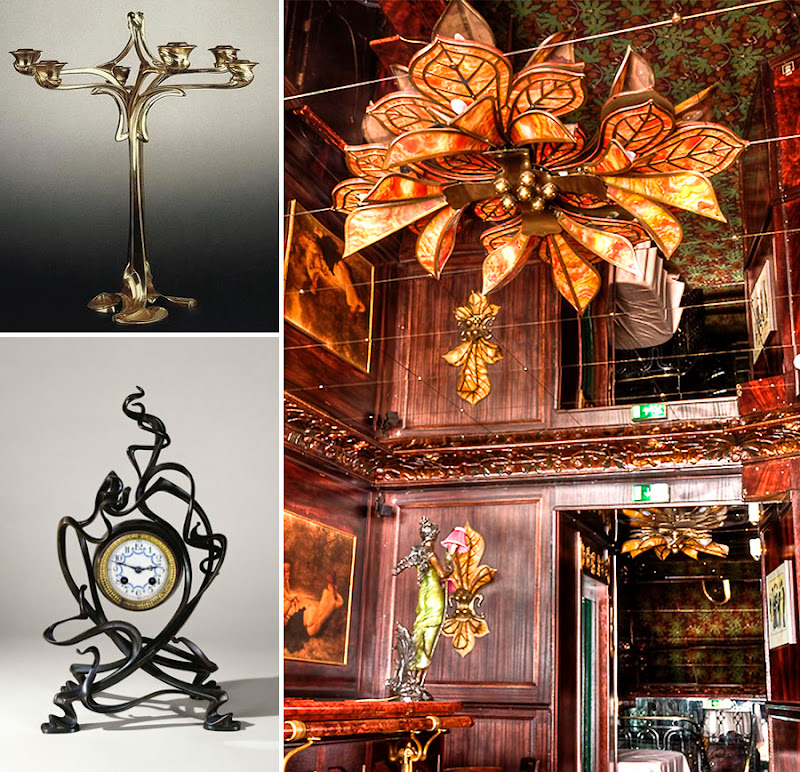
(images via 1, 2, 3)
On the left are the gorgeous mantel clock by Victor Horta and Candelabra by Henry van de Velde.
Not really Art Nouveau, but carrying the same sense-of-wonder and audacity in vision is the "Creation of the World" sculpture at Versailles ("Pendule de la création du monde", 1754):
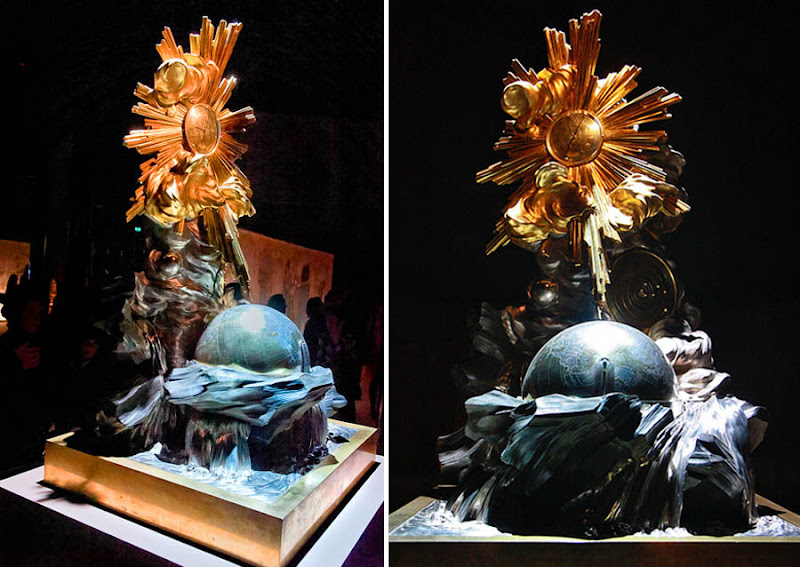
(images credit: Claude Rozier, Mamnic47)
Some rare decorative table pieces and lamps:
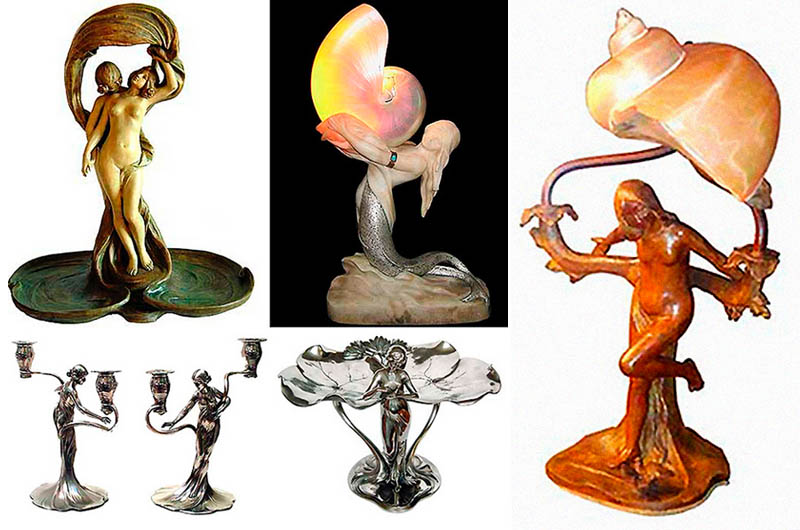
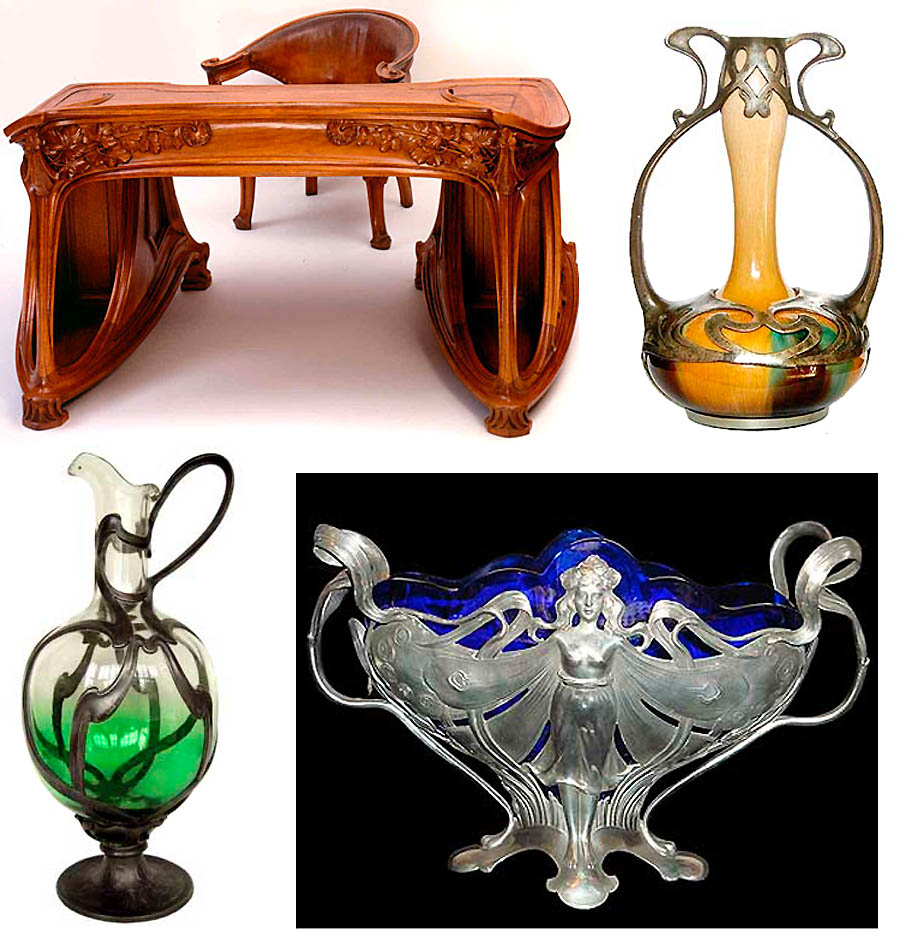
(images via Morgan Strickland Antiques, Anne Petersen)
William Morris' fantasy-like patterns are well-known (right image), but on the left you see often overlooked work by Beardsley and Charles Rennie Mackintosh:
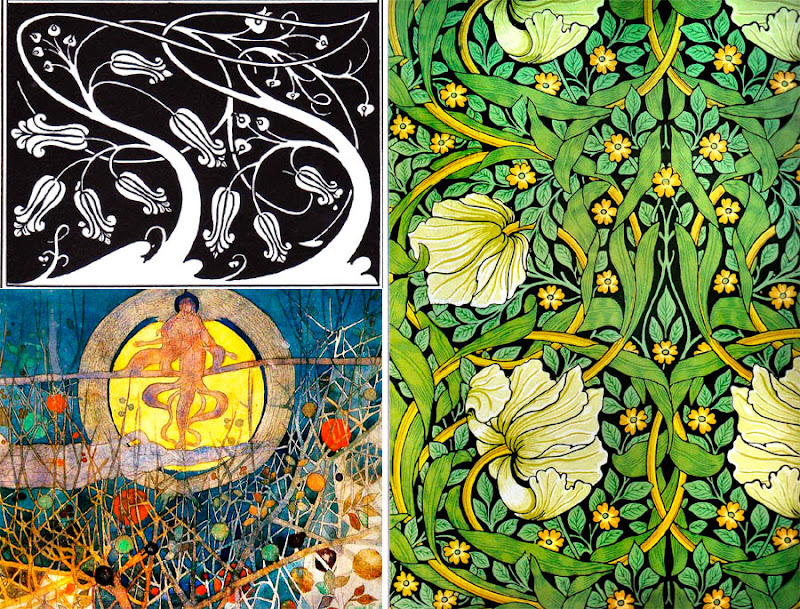
Interesting work by Archibald Knox, and some modern Art Nouveau jewelry from Tadema Gallery:
The echoes of art nouveau can even be traced in the 1960s: here is a very stylish photo of Swedish actress Britt Ekland





















